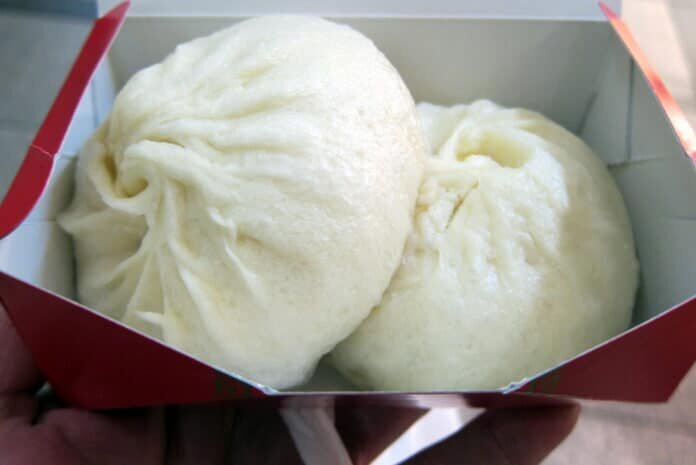
In the hustle and bustle of a busy city like Osaka, there are plenty of days when one simply does not have the time to sit down and eat a proper lunch or dinner. Butaman
For days like this, we often look to the humble convenience store to satisfy our immediate hungry in a quick yet tasty way, so we can get back to the office as soon as possible.
It was while I was working in central Osaka a number of years ago, under these circumstances that I first discovered Butaman, one of the most delicious snacks you’ll find in any convenience store the world over.
These light, fluffy, bread buns, stuffed with succulent, juicy minced pork and an assortment of vegetables are not too dissimilar from the kind of pork buns you will find in a typical Chinese “Dim Sum” assortment.
On a personal note, it may not be a popular view, but having sampled these buns both in Osaka and Hong Kong, I actually prefer the taste and texture of those found in Osaka.
Anyway, I digress.
Of course not all of us live in a part of the world where the local Seven Eleven (or 8-12 if you live in Northern China!) will have steaming hot Butaman ready for you to pick up and enjoy.
However, fear not dear readers. Once again, we at Osaka.com have you covered. So, please join me today as we take through this step by step guide to make your own delicious Butaman right in the comfort of your own home.
The following recipe will make 10-12 buns, depending on the size and shape you decide to go with.
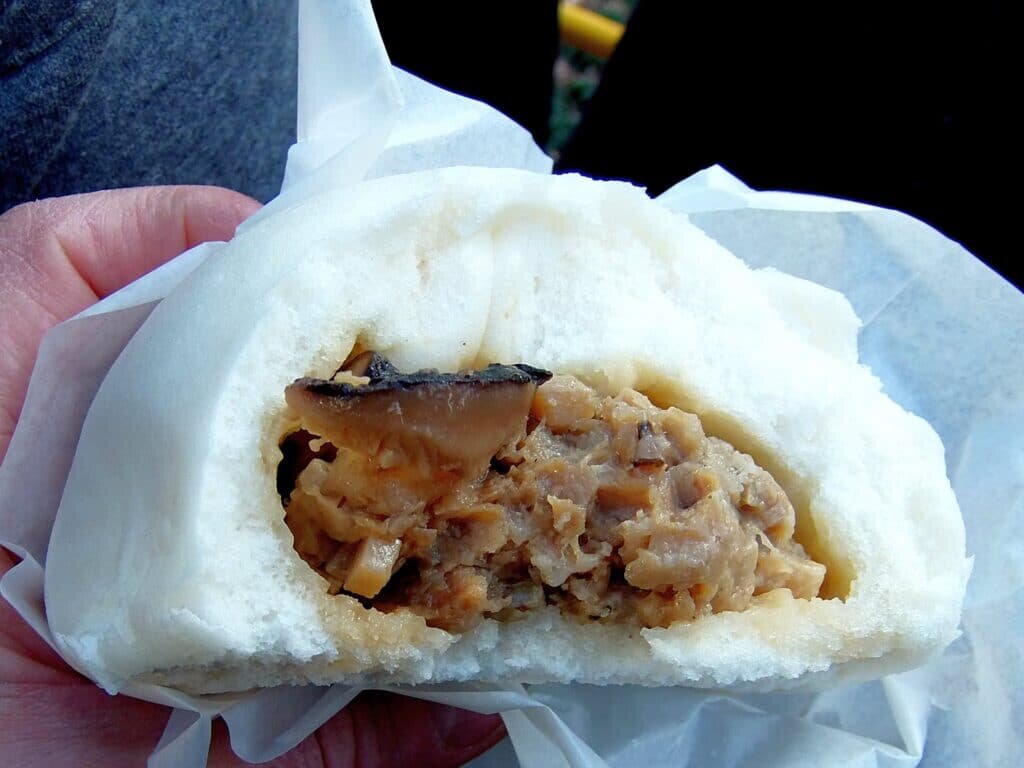
You will need the following ingredients:
For the buns:
1.5 cups of flour
2 tablespoons of sugar
A dash of salt (add according to personal taste)
1 teaspoon of yeast
1 tablespoon of baking powder
150 ml of milk (may need to add a little more depending on how the mixing process goes).
300 ml of water (again add a little more if the mixture is going dry)
1 knob of butter
For your meat filling:
300 grams of minced pork (the leaner the better)
1 small can of bamboo shoots in water (drained)
2 minced garlic cloves
1 peeled, crushed and minced ginger root
50 grams of diced shitake mushrooms.
1 teaspoon of olive oil
1 teaspoon of sugar
1 shot of Japanese Sake wine
1 dash of soy sauce
1 dash of oyster sauce
How to Prepare:
First of all, let’s work on the meat filling.
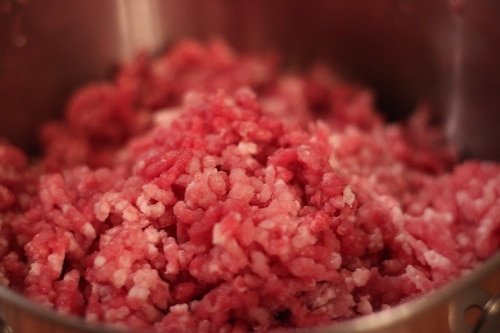
Take your minced pork, bamboo shoots, garlic, ginger and mushrooms.
Run them through a food processor to make a smooth paste. Pour the mixture into a bowl, stir well. Add the olive oil and sugar, stir some more until the oil and sugar are fully absorbed.
Next, add the sake, soy sauce and oyster sauce. Give the whole mix another thorough stir.
Note: Be careful not to add more than just a dash of oyster sauce. The flavor of oyster sauce can be quite pungent and will overpower the other flavors in your mixture if you add too much.
Once you mixture is ready set it aside for now.
We will now start working on your buns, no pun intended!
For the bun mixture, things are a whole lot simpler and more straightforward.
Throw all your bun ingredients into a big bowl. Mix vigorously. Again, if you have a food mixer, then please make use of it.
As I mentioned earlier, have a little more water and flour on standby in case your mixture comes out too watery or too heavy.
Once you have a nice, firm, but not too stodgy dough mixed up, it’s time to shape the buns themselves.
Roll your dough out flat and cut it into circular discs, each roughly about the size of the palm of your hand.
Take a generous helping of your meat filling, and drop that into the center of your discs. You can put as much filling in as you want, but just be sure to leave enough of a gap around the edges of your discs that you can roll them up into the traditional “Butaman” shape when the time comes.
As a general rule, your filling shouldn’t take up more than about 50% of the surface area of your dough discs.
Fold your discs up, concealing the meat inside, and gently pinch them at the top to form the traditional “Butaman” shape.
Let them stand for about 5 mins or so, while you prepare your steamer.
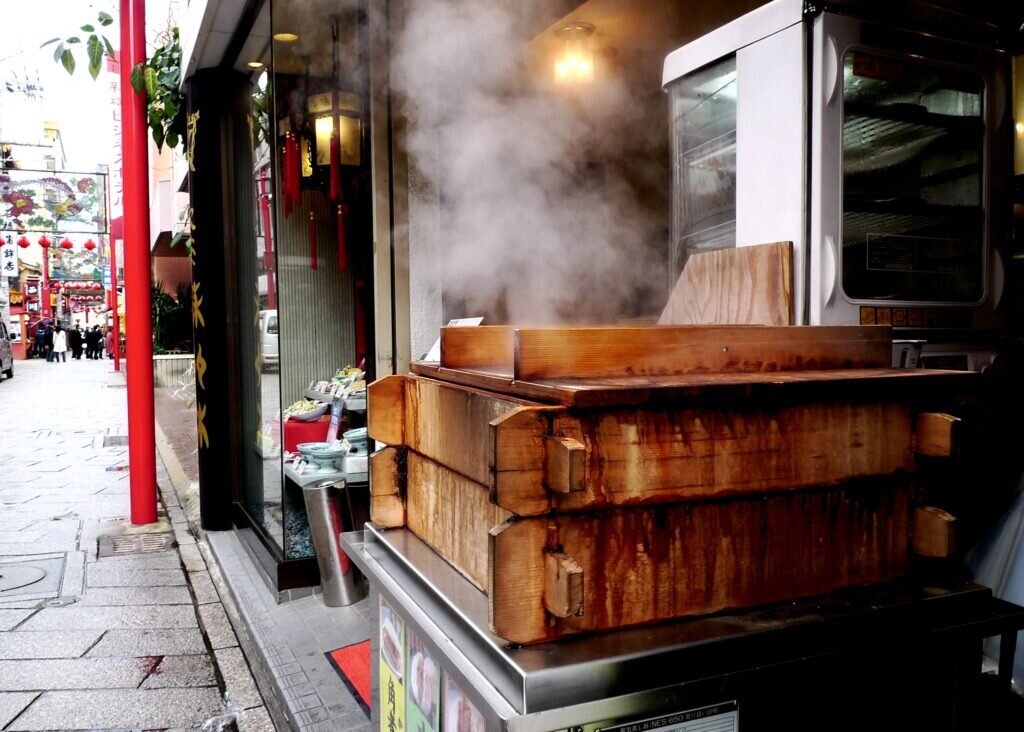
For best results, I recommend using a traditional Chinese bamboo steaming basket. You can usually pick these up for a dollar or two at your local Asian supermarket.
Steam the buns for around 10 to 15 minutes, making sure they are completely cooked through before serving.
It’s a matter of personal choice, but I find that, in the absence of the Japanese horseradish based mustard you get with “Butaman” in Japan, a simple French Dijon mustard makes an excellent substitute.
All that’s left now is to get a beer from the fridge, kick back and enjoy your “Butaman”.
On a side note, Buta in Japanese means pork. You can of course make this same recipe with other meats if you prefer, but that would then be called a “Nikuman” (meat bun).
Whichever way you decide to go, I’m sure you’re in for a delicious treat!




















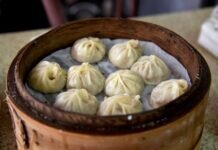





This butaman/ steamed pork bun recipe is probably of Chinese origin or same as Chinese steamed buns. I have eaten Chinese steamed buns my whole life & there are different styles of Chinese steamed buns. Some Chinese steamed buns are nice & soft / fluffy steamed bread buns – containing a variety of fillings. Some Chinese steamed buns are a bit harder in texture. The steamed buns in Cantonese dim sum restaurant are usually a bit hard in texture. Looking at photos of Japanese steamed buns = Japanese & Chinese steamed buns look the same or similar & most likely are of the same recipe. A lot of Chinese have lived in Osaka, Japan- right? To make money, the Chinese in Osaka probably made & sold Chinese steamed buns. The steamed buns probably became popular in Osaka because steamed bread buns containing variety of fillings taste good.
hi,
Yes, butaman / steam pork bun is Chinese-originated cuisine. The steam pork-bun was made especially famous in Osaka due to the popularity (and limited-edition nature) of 551 Horai ( https://www.osaka.com/eat/551-horai-the-top-5-foods-to-try-on-your-first-visit )
Thank you for your input 🙂